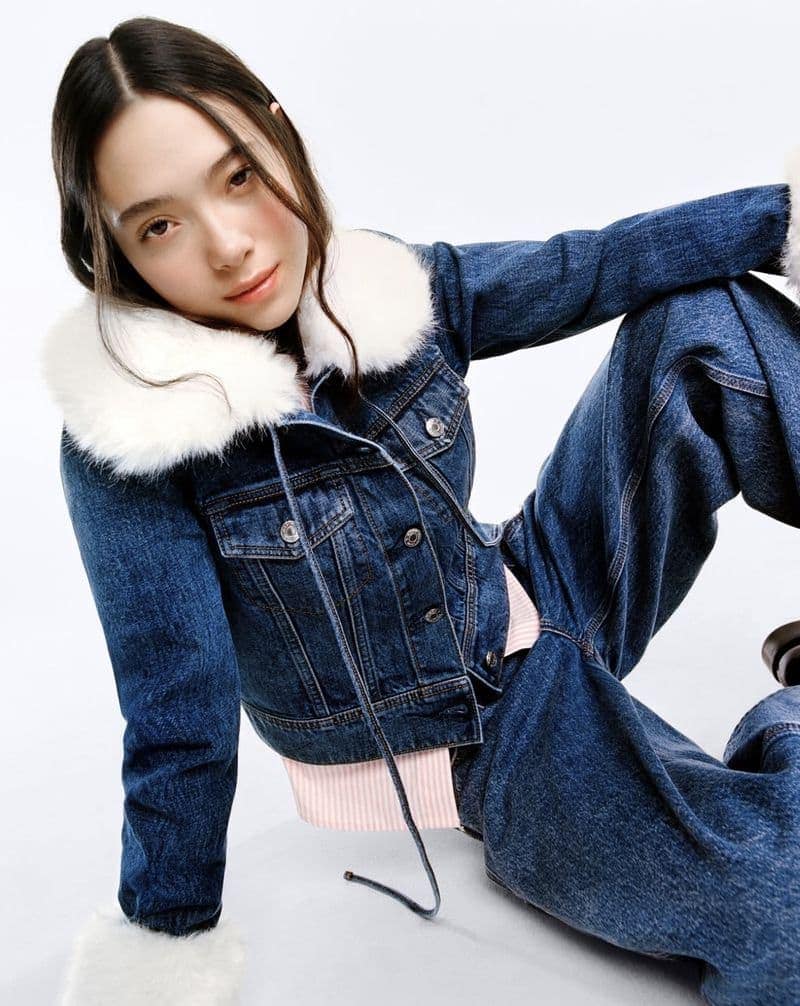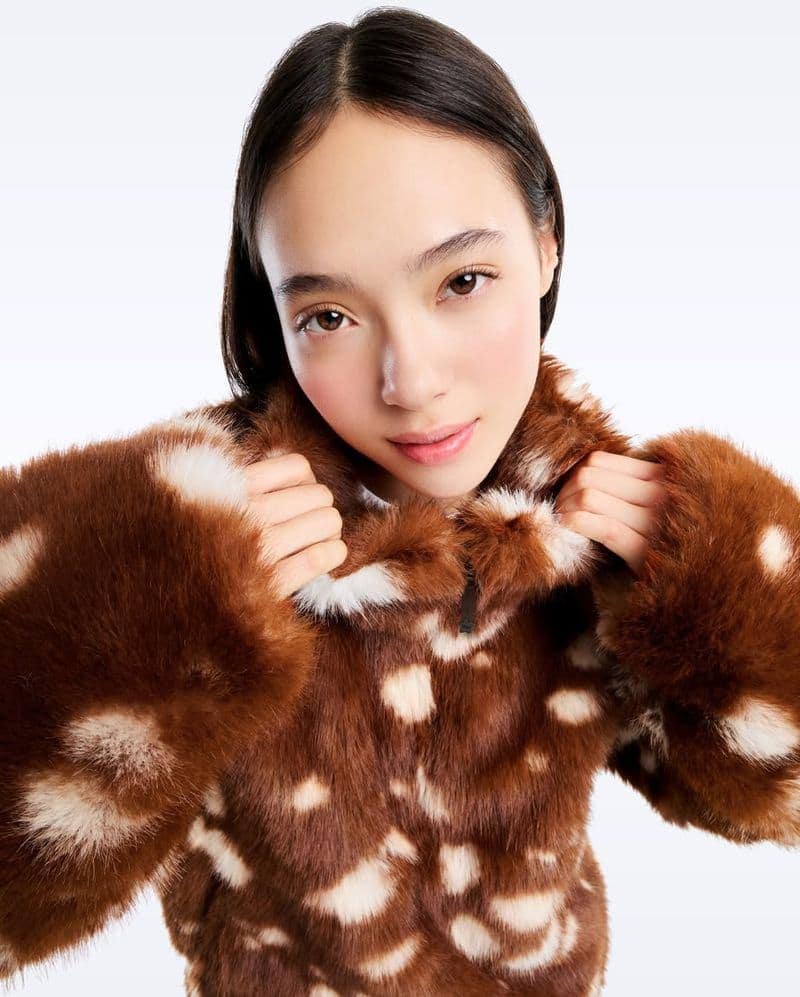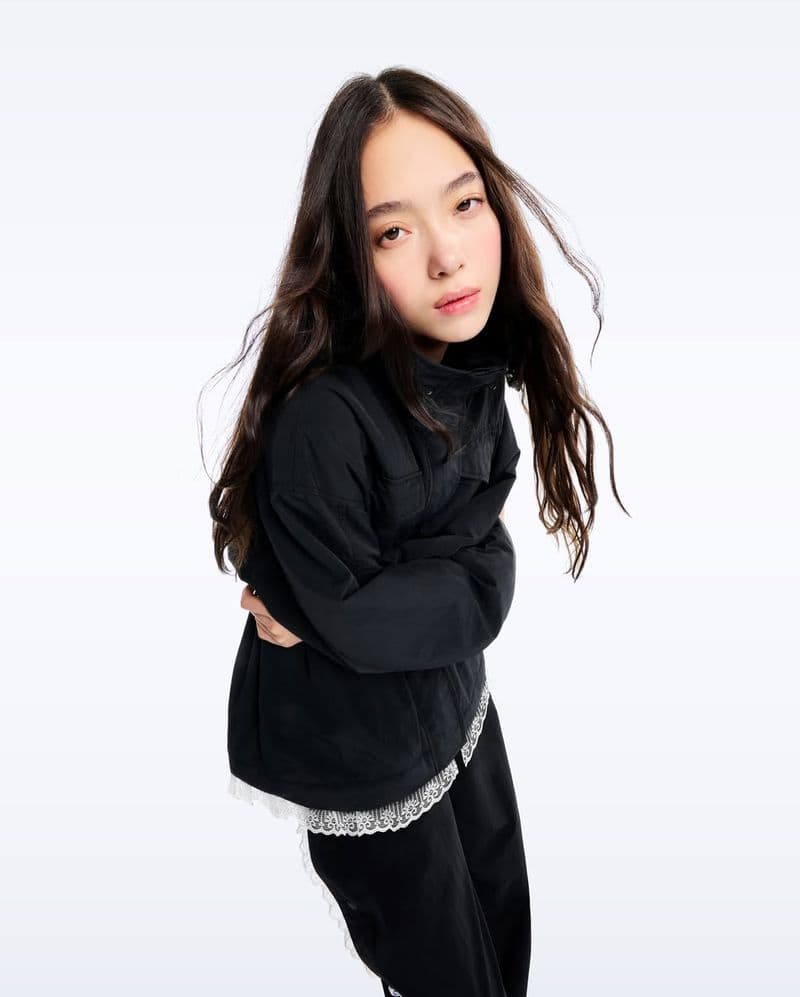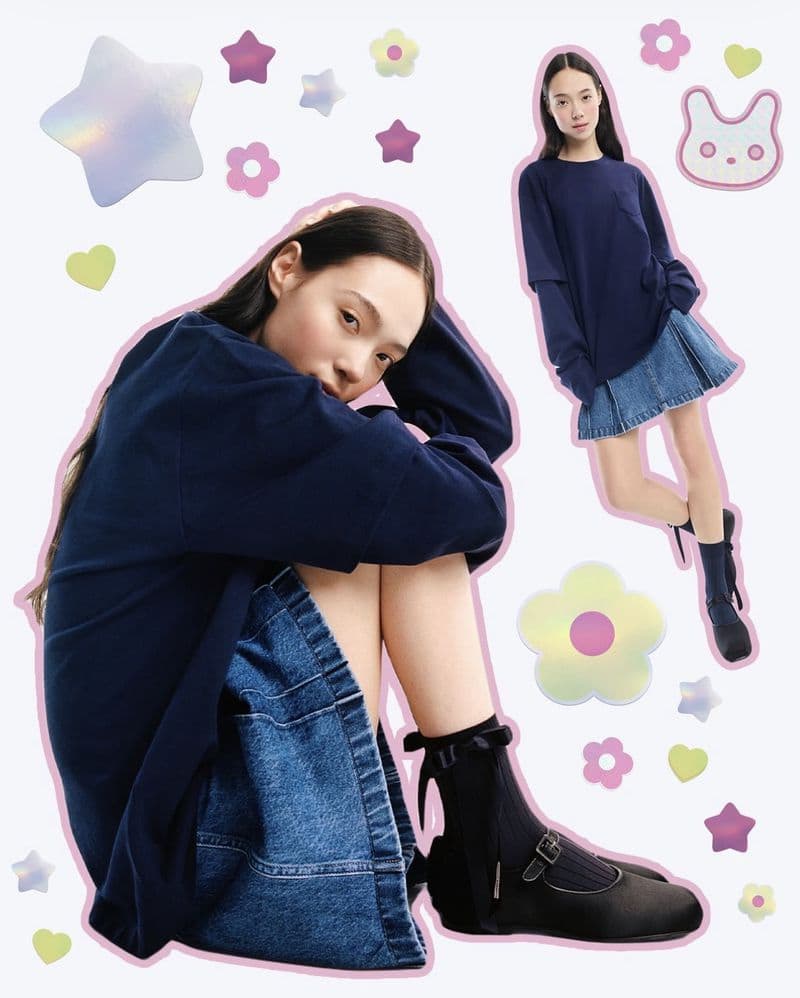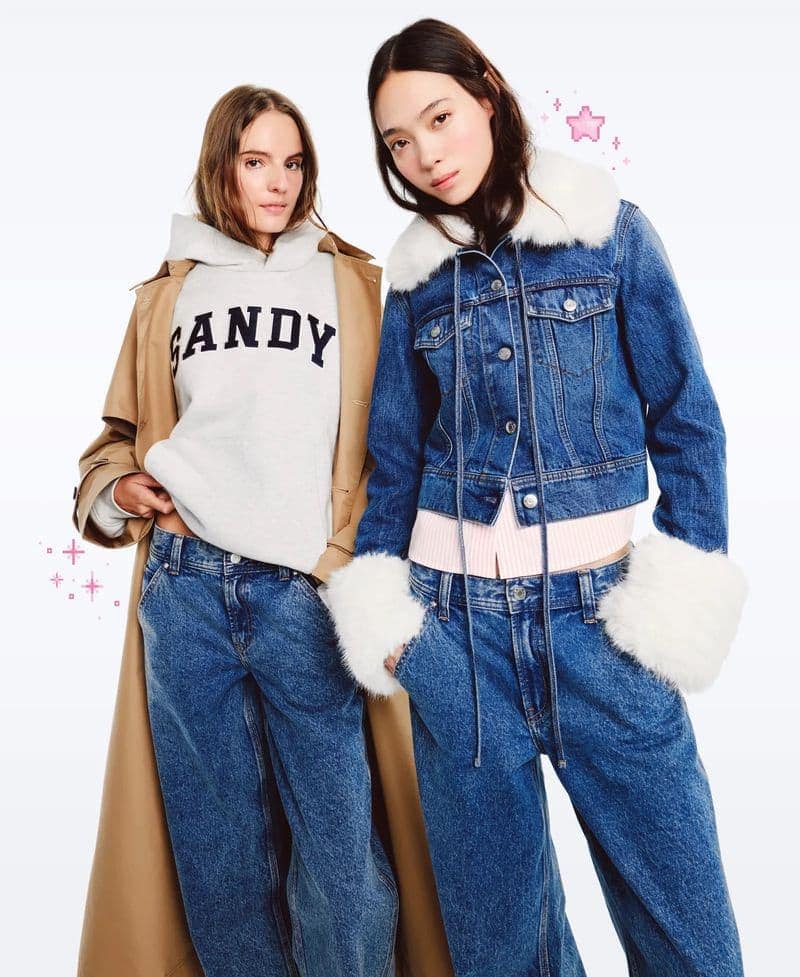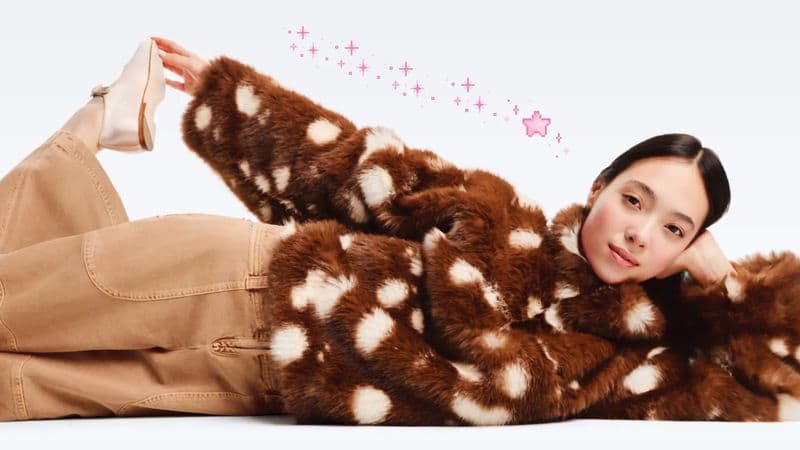The New York designer reimagines Gap’s heritage through her nostalgic yet subversive lens, bridging downtown cool with American classicism.
Gap has unveiled its latest designer collaboration with New York–based Sandy Liang, marking one of the retailer’s most culturally resonant partnerships of the year. Launching Friday, the collection spans women’s and kids’ apparel and reinterprets Gap’s most recognizable silhouettes through Liang’s feminine, irreverent aesthetic. The collaboration arrives as Gap continues its broader strategy of creative partnerships to reinvigorate brand relevance and reconnect with younger consumers.
Anchored by denim and outerwear, the capsule blends utility with sentimentality: bow-trimmed carpenter jeans, sherpa-lined jackets, and reimagined fleece pieces sit alongside cropped vegan-fur pullovers and low-rise denim minis. Prices range from $15 to $268, with select pieces available internationally across markets including Japan, Mexico, and the U.K. The accompanying campaign—directed by Sophie Hur and animated by celebrated visual artist Annie Choi—features the short film Sandy’s Dream Closet, a nostalgic reflection on Liang’s Lower East Side upbringing above her family’s Cantonese restaurant. Through this narrative framing the collaboration is balanced as both a personal journey and a contemporary redefinition of the Gap identity.
For Liang, whose brand is synonymous with youthful romanticism and an offbeat sense of femininity, the project represents both homage and evolution. Sandy, reflecting on how the brand shaped her early imagination of style, translates that nostalgia into a modern vernacular—complete with bow motifs, playful proportions, and mother-daughter pairings. The collection speaks to a generation seeking familiarity filtered through irony and sincerity in equal measure. It also marks Liang’s first foray into childrenswear, a nod to her own recent motherhood and to the growing consumer interest in family-centric lifestyle branding.
For Gap, the collaboration underscores an ongoing recalibration of its creative identity through strategic partnerships—following capsules with Dôen, Harlem’s Fashion Row, and Béis. Each has served to recontextualize the brand’s American heritage for new audiences, balancing commercial accessibility with cultural currency. The Liang collaboration, in particular, captures a zeitgeist moment: the return of 2000s nostalgia seen through a designer fluent in both street and softness. As Gap positions itself within a new era of expressive minimalism and community-driven storytelling, Sandy Liang x GAP feels less like a one-off collaboration and more like a conversation between generations—about where American style has been and where it’s headed next.
